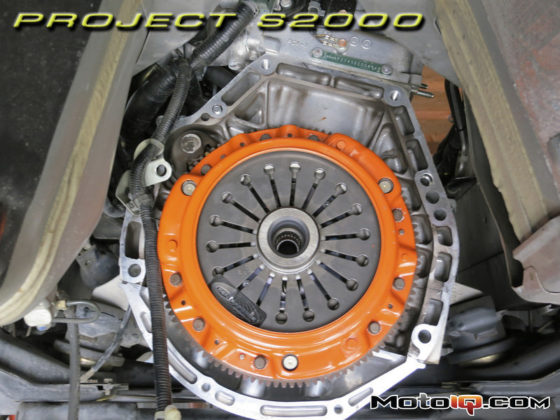,

On the left is a DE and on the right is an HR upper alternator bracket. They are cast iron with multiple steel inserts. The DE one weighs in at 1.55 lbs. According to this AWG Wire Table, 5 feet of 2 gauge wire weighs 1 lb. I estimate it would be almost a 10' run to where the power distribution unit is, making for a wire weight of 2 lbs. So in total, we save approximately 17.75 lbs without running a charging system. There are other smaller brackets, bolts, and wires too, so I'll round it up to 18lbs. Once the car gets sorted out and we remove one of the B128L batteries, we'll be saving a total of 26 lbs (18 + 8lbs) compared to running an Odyssey PC680 battery. Then of course there's the added reliability of not having to even run an alternator or a belt for that matter (all kinds of harmonics occur through belts at sustained high RPMs). For the cost savings between a Braille B128L and a PC680, you cannot even buy a legit dry carbon hood. And most of the time a legit dry carbon hood isn't going to save you 26 lbs, making the Braille B128L a pretty damn good deal when it comes to dropping the weight of a Time Attack car.

For a pure Time Attack car, charging systems will no longer needed in the future with Lithium Ion batteries. There are other Lithium Ion batteries coming on the market now, but none of them can really claim the success that Braille has been having on winning cars in the upper echelons of motorsport. I'd have to say that the Braille Lithium batteries are definitely well proven.

Now back to the last couple weeks of thrashing: race cars need windows too so Gary worked with the Plastics4Performance Lexan windows that I ordered from England and fitted them up. To his surprise, the windows fit PERFECTLY. There was none of this trim to fit bullshit that some of the American “pre-cut” Lexan window suppliers offer. The Plastics4Performance windows were also fully and uniformly deburred at every edge and are fully thermoformed to match the curvature of the factory glass. As a fabricator, the P4P windows saved Gary and his guys a bunch of time overall.

Plastics4Performance also offers numerous options for thicknesses, colors, coatings, and other physical features. Shipping from England isn't too expensive either since P4P ships a lot of international packages. They get a really good deal and pass the savings on to their customers. Our GT-R's driver side window has the slider window option. We call it the “drive through window”, but it will only work in the left lane of IN-N-OUT Burger or a McDonald's in Japan since the GT-R is right hand drive. Our rear quarter windows have NACA ducts and the rear windshield has holes along the lower perimeter to encourage air flow through the cabin. I didn't get to snap any pictures during the craziness so I'll be sure to put pics of the other windows in Part 10.

Like I said, the Plastics4Performance windows fit perfectly all around. Check out how uniform the edge of the window is on the factory Nissan window trim. Ordering options like the drive through windows, NACA ducts, and vents from P4P also saves you or your fabricator from having to drill and cut into your newly purchased Lexan windows. It would suck if your drill slipped, you cut too much, or just plain scratched the window.

I had an American brand Lexan front windshield for a Nissan 240SX S14 sitting around from one of my stillborn projects. Luckily it was a “trim to fit” type so Gary was able to trim it to fit the GT-R. When they say “trim to fit”, I think they really mean “cut a shitload off to fit” because even to fit a S14, I remember a significant amount needed to be cut. The 3/16″ windshield was also thermoformed (for an S14). Because it was only 3/16″ thick, Gary had to build a windshield support so that it would not collapse at 200 mph (some wishful thinking) on the front straight of Eastern Creek.

In this picture, there was lot's of stuff going on at the same time, like Tim trying to figure out some of the electrical harnesses, but you may remember that the BorgWarner EFR 9180 turbo sits on the passenger side floorboard. Here the turbo is pretty much complete and mostly wrapped up with header wrap from Vibrant Performance. For the box and ducting that will encase the turbo, we'll be using a lot of Vibrant's new DCI brand heat shielding to manage the heat and keep the cockpit nice and cool for Tarzan.


